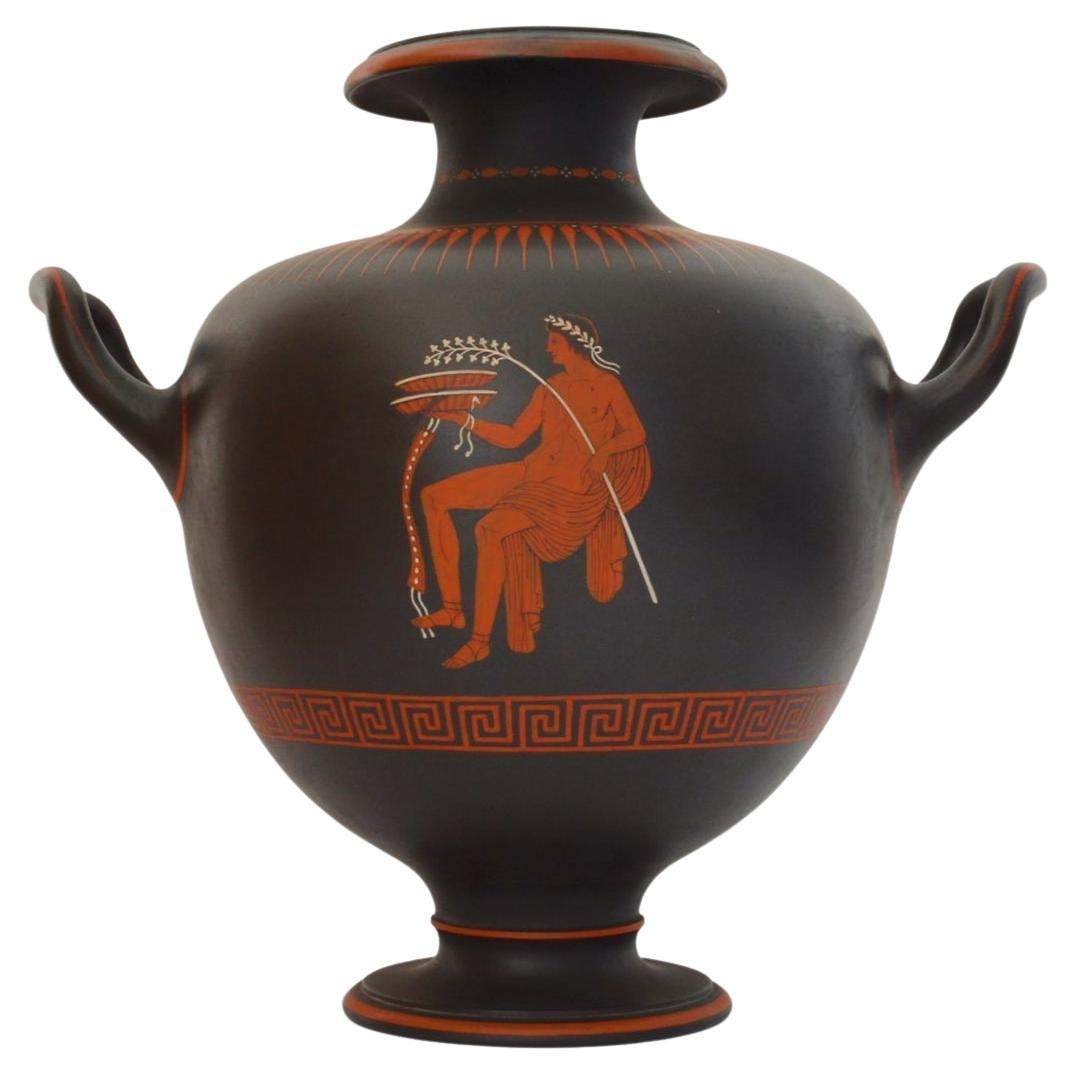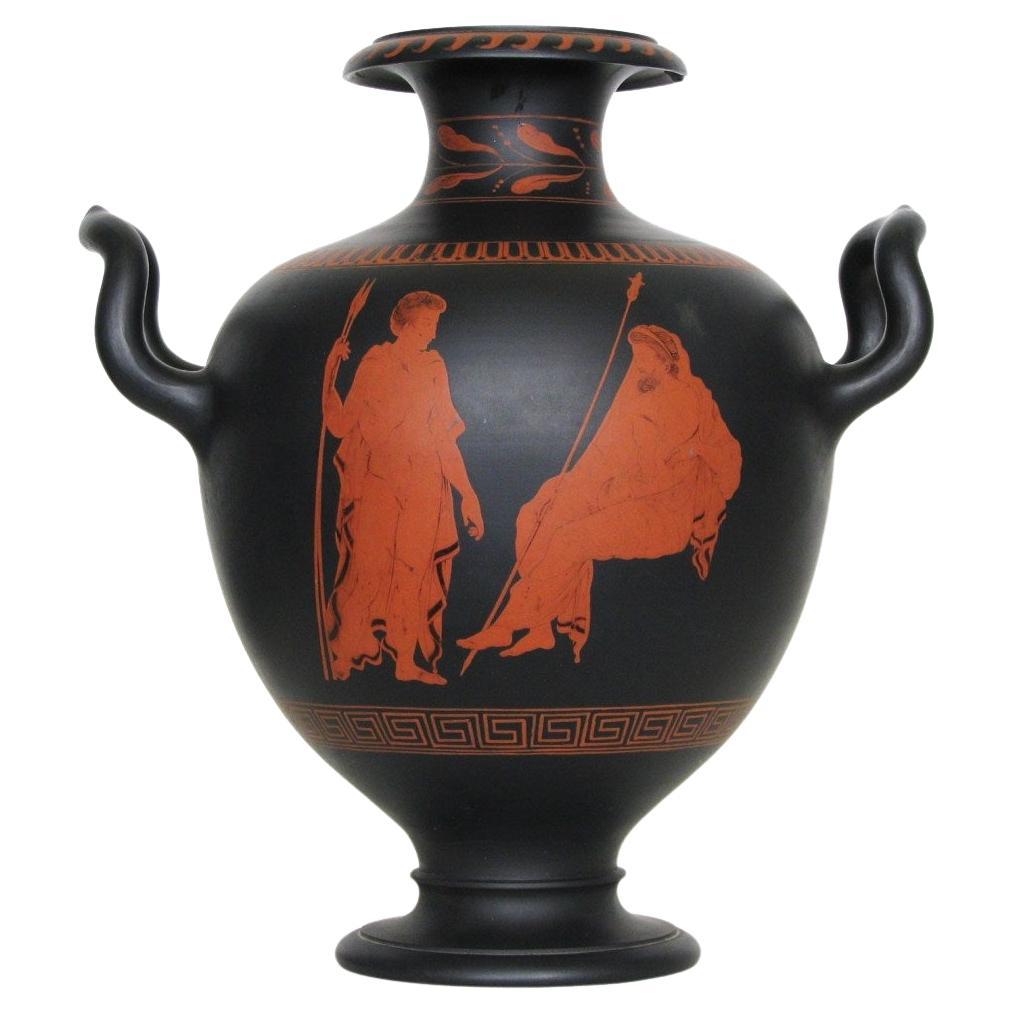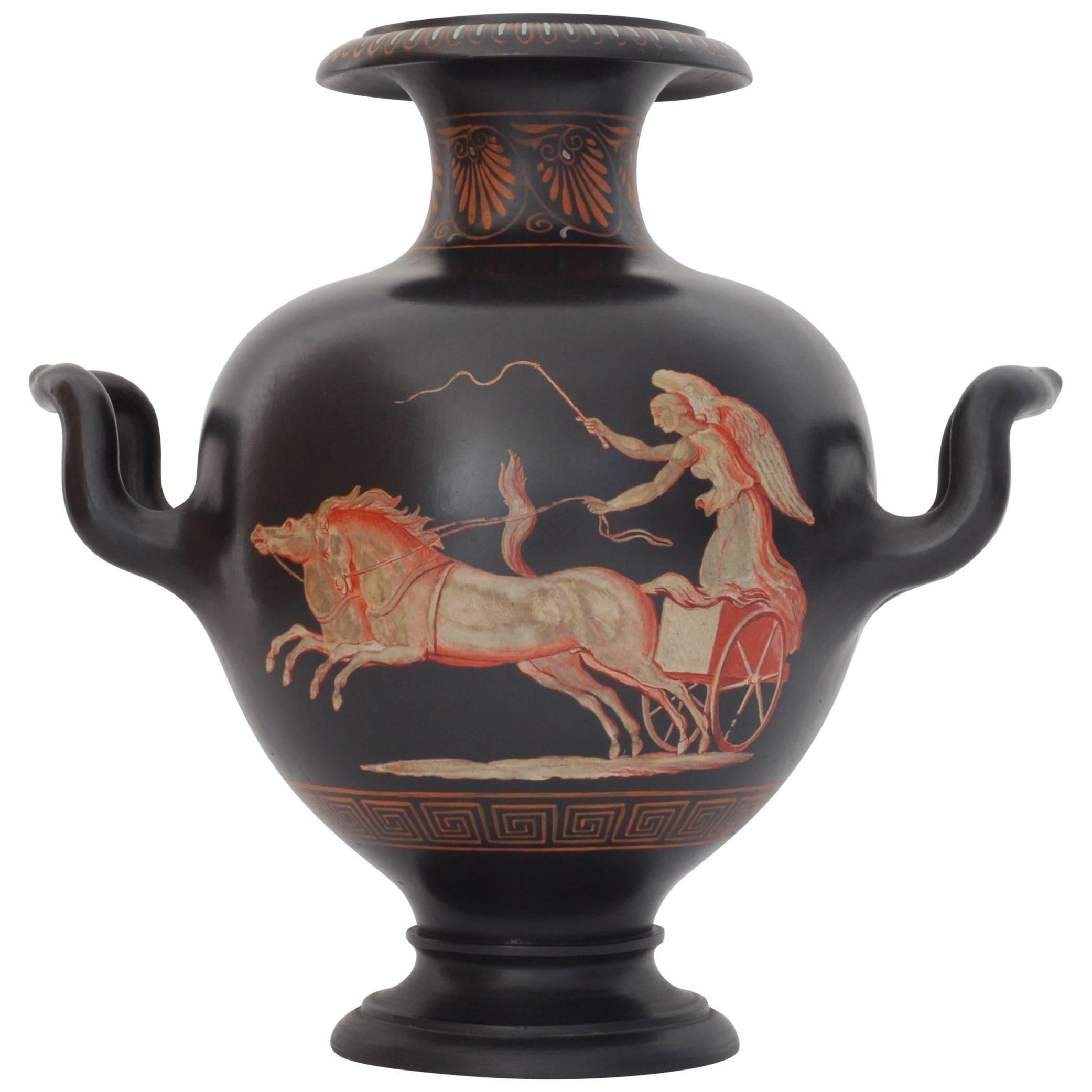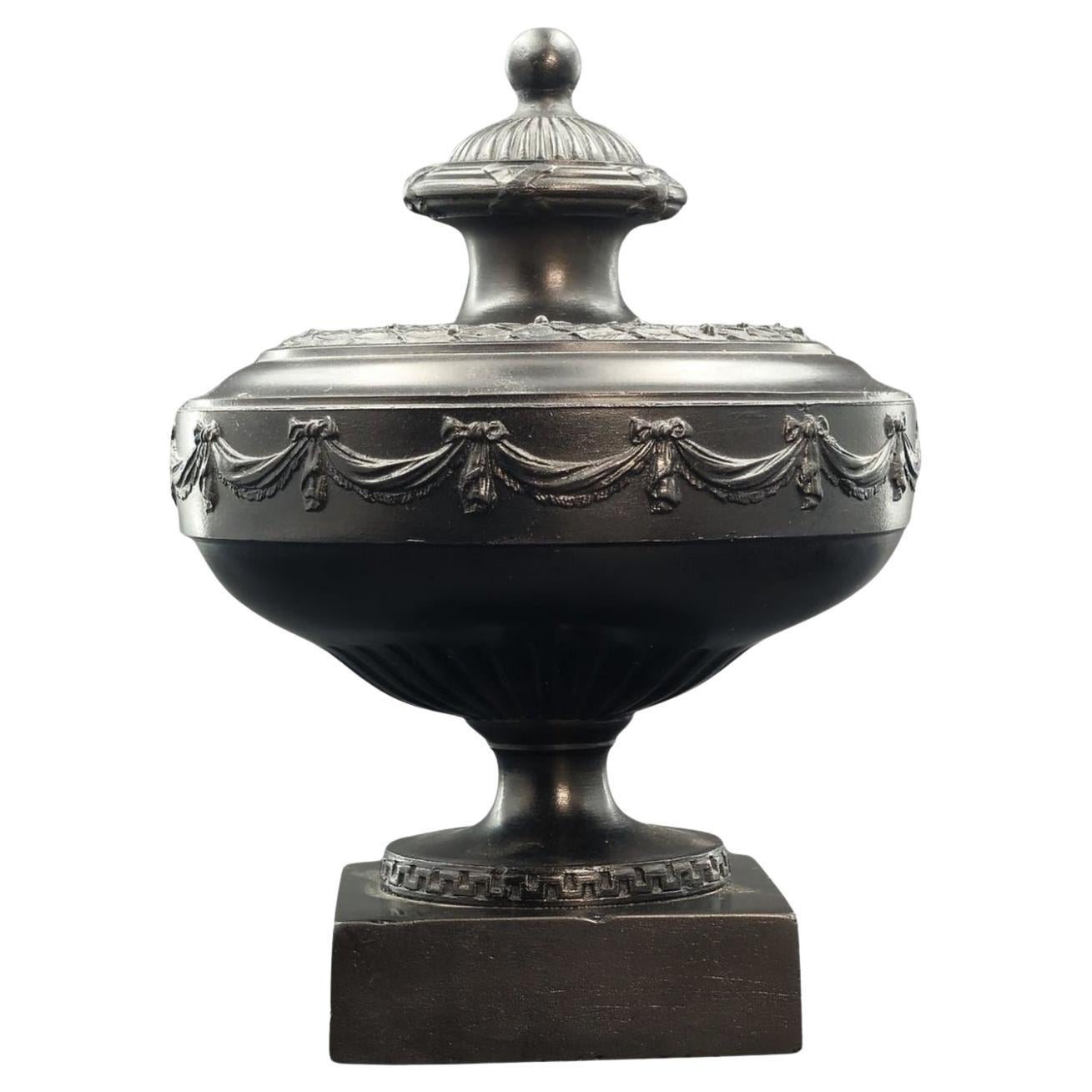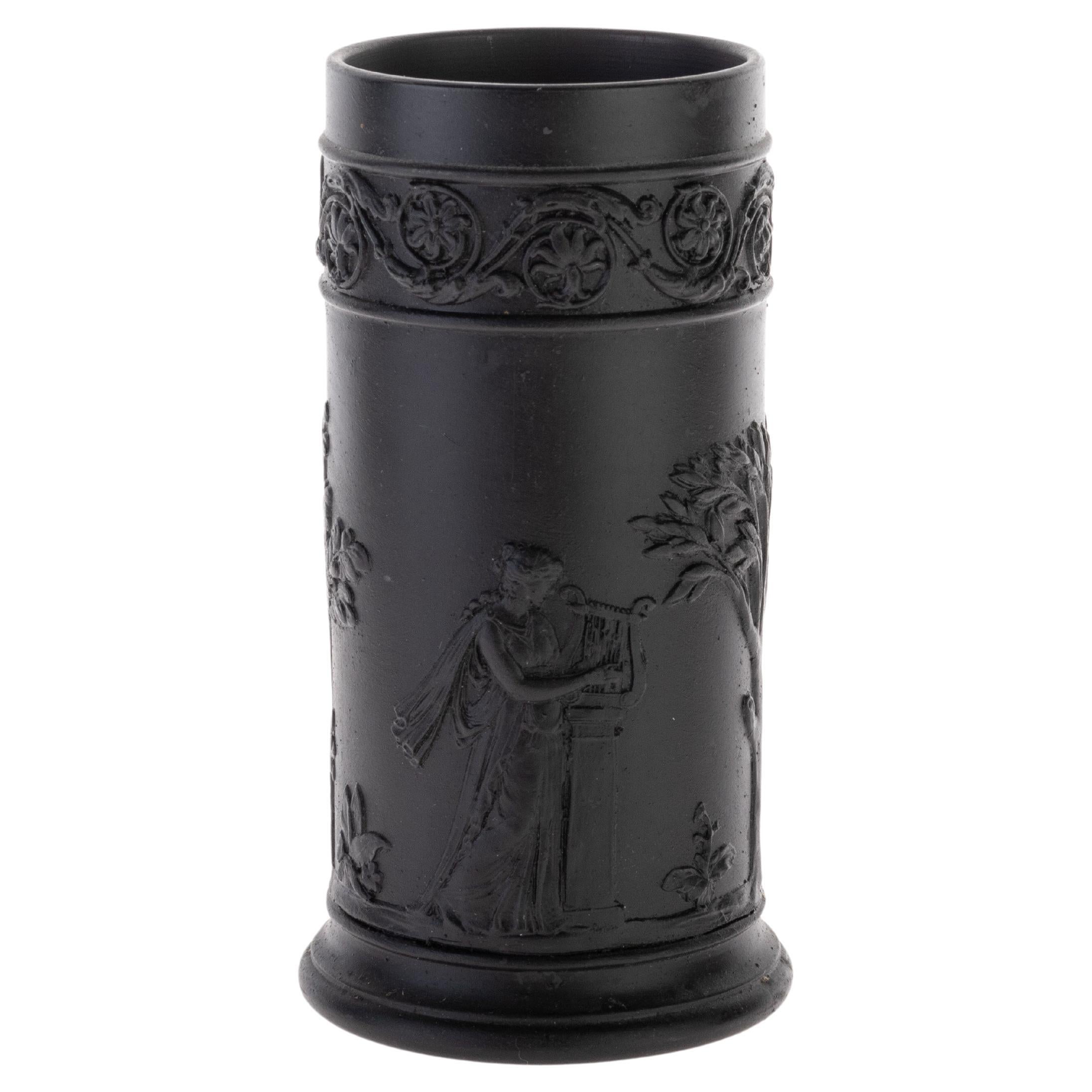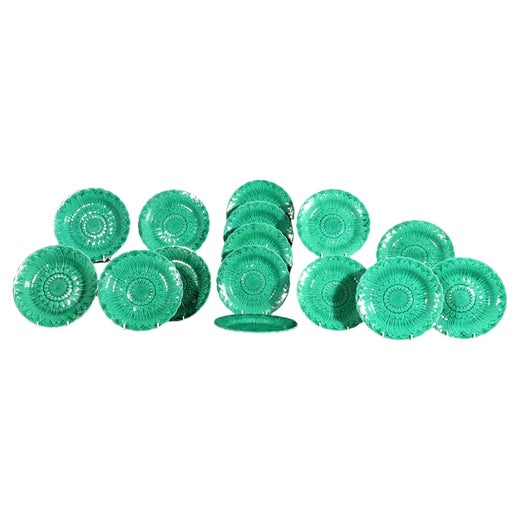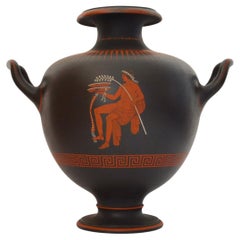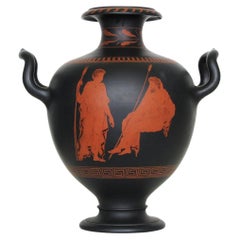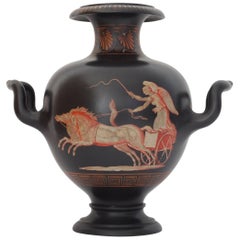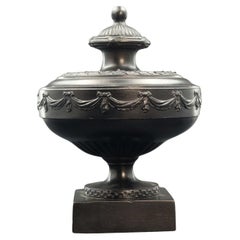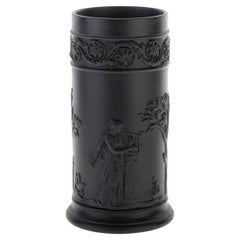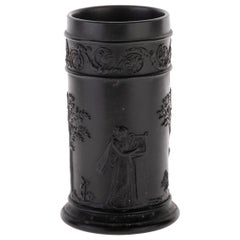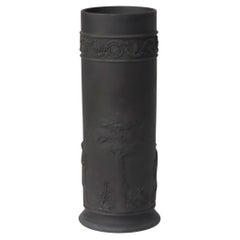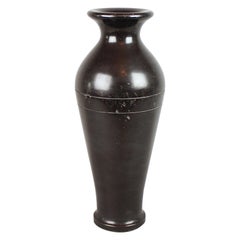Encaustic Painted Basalt Vase, Wedgwood, circa 1785
About the Item
- Creator:Wedgwood (Manufacturer)
- Dimensions:Height: 13.39 in (34 cm)Diameter: 11.03 in (28 cm)
- Style:Neoclassical (Of the Period)
- Materials and Techniques:Stoneware,Turned
- Place of Origin:
- Period:
- Date of Manufacture:circa 1785
- Condition:Wear consistent with age and use. A mark to one side, as shown; probably from a silver ring.
- Seller Location:Melbourne, AU
- Reference Number:Seller: 19981stDibs: LU3151340429002
Wedgwood
Arguably the most celebrated of all English ceramics makers, Wedgwood was founded in 1759 by potter Josiah Wedgwood (1730–95) in Staffordshire, which was home at one time to hundreds of pottery workshops. The company is famed for its Jasperware — molded neoclassical stoneware vases, plates and other pieces inspired by ancient cameo glass, featuring white figures, scenes and decorative elements set in relief on a matte-colored background. The best-known background hue is light blue, but Wedgwood’s iconic silhouettes also appear on green, lilac, yellow, black and even white grounds. Some antique Wedgwood dinnerware pieces and other items feature three or more colors.
The Wedgwood firm first came to prominence for its tableware, which quickly gained favor in aristocratic households throughout Britain and Europe. In 1765, Wedgwood was commissioned to create a cream-colored earthenware service for Queen Charlotte, consort of King George III. The queen was so thrilled with her new china that Wedgwood was given permission to call himself “Potter to Her Majesty,” and the decorative style became known as Queen’s Ware.
Not to be outdone, Catherine the Great of Russia commissioned her own set of Wedgwood china in 1773. Nearly 200 years later, the firm created a 1,200-piece service for the coronation of Queen Elizabeth II. In recent years, leading designers including Jasper Conran and Vera Wang have collaborated with Wedgwood — in the tradition of such distinguished 18th-century artists such as the painter George Stubbs and metalsmith Matthew Boulton.
From plates and other dinnerware to decorative items like urns, cachepots and candlesticks, Wedgwood designs lend a traditional air to Anglophile interiors. And even if you have to make your own tea, you may find it comforting to sip it from a delicate cup that was manufactured in the same Stoke-on-Trent kiln that produced Her Majesty’s tea service. Be sure to keep your pinky raised.
Find antique Wedgwood pottery on 1stDibs.
- ShippingRetrieving quote...Shipping from: Melbourne, Australia
- Return Policy
More From This Seller
View AllAntique Late 18th Century English Neoclassical Pottery
Stoneware
Antique Late 18th Century English Neoclassical Pottery
Stoneware
Antique 1780s English Neoclassical Pottery
Stoneware
Antique Late 18th Century English Neoclassical Pottery
Stoneware
Antique Early 1800s English Neoclassical Pottery
Stoneware
Antique 1880s English Neoclassical Pottery
Pottery
You May Also Like
Antique 19th Century Vases
Porcelain
Antique 19th Century Vases
Porcelain
Antique 19th Century Pottery
Pottery
Antique Late 19th Century French Grand Tour Vases
Belgian Black Marble
Antique 19th Century Pottery
Stoneware
Mid-20th Century French Art Deco Vases
Ceramic
